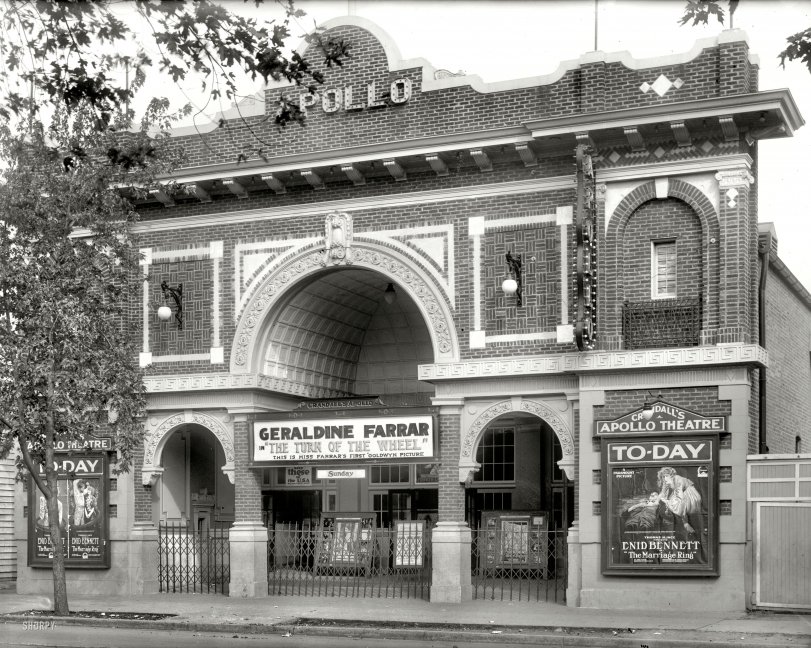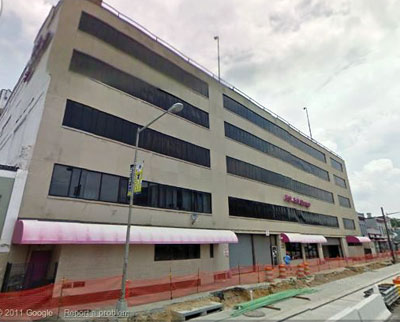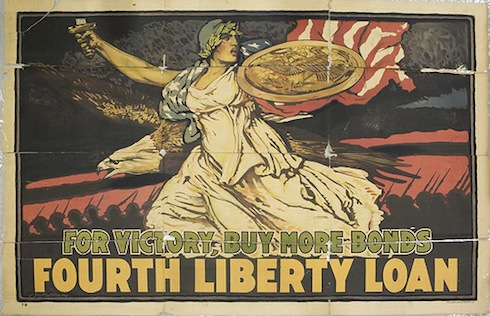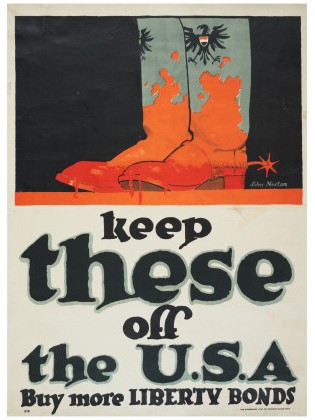


Framed or unframed, desk size to sofa size, printed by us in Arizona and Alabama since 2007. Explore now.
Shorpy is funded by you. Patreon contributors get an ad-free experience.
Learn more.

- Freeze Frame
- Texas Flyer wanted
- Just a Year Too Soon
- WWII -- Replacing men with women at the railroad crossing.
- Yes, Icing
- You kids drive me nuts!
- NOT An Easy Job
- I wonder
- Just add window boxes
- Icing Platform?
- Indiana Harbor Belt abides
- Freezing haze
- Corrections (for those who care)
- C&NW at Nelson
- Fallen Flags
- A dangerous job made worse
- Water Stop
- Passenger trains have right of way over freights?
- Coal
- Never ceases to amaze me.
- Still chuggin' (in model form)
- Great shot
- Westerly Breeze
- For the men, a trapeze
- Tickled
- Sense of loneliness ...
- 2 cents
- Charm City
- What an Outrage
- Brighton Park
Print Emporium
Cineplex: 1918

Washington, D.C., circa 1918. "Crandall's Apollo." Featured photoplays include "The Turn of the Wheel" with Geraldine Farrar and "The Marriage Ring" with Enid Bennett. National Photo Company Collection glass negative. View full size.
Release Dates
Birds of a Feather- Monday June 3rd
The Marriage Ring- Monday August 26th
Turn of the Reel Sunday- September 1st
So fairly simple to work out when the photo was taken
Long gone
The Apollo opened in 1913 at 624 H Street NE, in an area that the 20th century wasn't good to.
The theater apparently closed in the late 1950s and there were plans to convert it into a garage. The site is now occupied by a self-storage place.

Handsome and high-class
Let's see what Headley's "Motion Picture Exhbition in Washington, D.C." has to say about the Apollo, "the pride of H Street for many years." Opened in the fall of 1913, it reportedly had the largest seating capacity of any Washington theater of the time. A balcony was added in the early 1920s, expanding its capacity to nearly 1,000 seats. Two Powers 6A projectors delivered a 14- by 18-foot image on a "gold fibre screen."
An open-air theater (for screenings in pre-air conditioning D.C.) was located just to the right of the Apollo in the image. The board fence that we see was replaced by a wall of gold-colored bricks in a 1919 renovation.
The Apollo ceased operation in 1955 and was torn down.
Modillions
are the S-shaped brackets under the projecting cornice near the top of the facade.
Fourth Liberty Loan
This is the poster on the right.

Lost Washington
Technology
It's interesting to reflect on the advances in technology that were happening around this time. Geraldine Farrar was a very well known recording artist and operatic singer as well as a popular movie actress, yet in 1918 we could either hear her or see her, but not both simultaneously. That feat would take a few more years.
Architectural features
The two horizontal bands located between the tops of the columns on either side of the Geraldine Farrar sign and the bottom of the coffered barrel vault over the theater entrance are akin to two parts of the entablature of classical architecture (entablature is the architrave, frieze and cornice resting on the capitals and columns below, and supporting the pediment above). The bottom band corresponds with the frieze and the top band with the cornice. Here, the "frieze" appears fluted rather than denticulated, with diamonds resting over the columns and quoins at the corners. (Dentils are small projecting blocks; flutes are the shallow vertical gouges, like the fluted columns of the Ionic and Corinithian orders, for example). The "cornice" above is composed of Greek key fret.
If by "overhang" you are referring to the bracketed cornice near the top of the facade (just under the Apollo sign), that appears to be egg-and-dart moulding (in the shadows behind the light bulbs).
I don't know of any single website source for this other than Wikipedia, which helped in refreshing my memory; I haven't had to use these terms since I switched careers almost 15 years ago, but I didn't spot any glaring errors there. (See the "columns and entablature" category, which will lead you to "entablature," "dentil," etc.)
Cowboy Huns
Here's the complete Liberty Bond sign seen in the entrance:

Mystery
I wonder what bounder stole the close-quote from Ms. Farrar's sign. We'll have to gather everyone in the Lobby, Watson. And where was the Apollo, by the way.
Enid Bennett
was an Australian-born actress who began her career on the stage in Sydney. After moving to New York to pursue a career on Broadway, she was discovered by The Marriage Ring's producer, Thomas Ince. She married the film's director, Fred Niblo, in 1918, and they had three children together. Her last film role was uncredited, as a store clerk in the Marx Brothers' "The Big Store" in 1941.
Niblo died in 1948, and in 1963, Ms. Bennett remarried, this time to director Sidney Franklin. She died from a heart attack, in Malibu, Calif., on May 14, 1969.
Architectural Feature
Can someone comment here on what the the name is for the dental molding like feature under the overhang? I see this on Victorian homes and have done some googling but have not found a good reference for all elements of architecture so if anyone has a good link please share.
[Ahem. Dentil, not "dental." - Dave]
Missing end quotes
This is Miss Farrar's first "Goldwyn Picture
How could they leave us hanging like that?
[How's this for closure: " - Dave]
Ahh, I can sleep easier tonight. Thank you Dave.
Logo
It's interesting that Paramount has essentially kept the same logo for all this time
"Don't quote me
What happened to the second set of quote marks? Is this Miss Farrar's first "GOLDWYN" PICTURE, or her first "GOLDWYN PICTURE"?
























On Shorpy:
Today’s Top 5